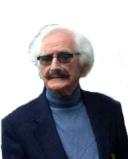Personality
'Marathon Runner' or 'Sprinter'?
A look at personality types and aerial warfare
Posted November 20, 2013
When it comes to ‘running’ as an athletic activity, do you see yourself as more a marathon than a sprinter type…. or vice-versa? From what you know about yourself as a personality—both physically and mentally—would you sign up for the 20-mile endurance run, or for the sprinter’s 100-yard dash? I ask the question because your preference would provide a good clue regarding the general psychological disposition of your personality.
To stay the marathon course demands the stamina and will to persist in the situation for a relatively long time, working out one’s strategy as the race progresses. So do you view yourself as having the kind of physical ability, and mental will, that would enable you to stay the marathon course over a relatively long period of time…. striving to get as close to winning as possible? Or do you think that the 100- or 220-yard sprint is more ‘up your street’, in that it demands a gathering and concentration of all one’s bodily energies, and mental tactical resources, working together for a limited period of time?
About halfway through pilot training in the Royal Air Force during World War II, the decision was made by the instructing officers as to whether a trainee would ultimately be posted to Fighter Command, Bomber Command, or Coastal Command. For each of these wartime branches of the Service had its own particular job to do, utilizing differing types of aircraft, each of which required a particular ‘piloting aptitude’ to perform effectively. In addition—flying skills not withstanding—pilots should possess the psychological characteristics best suited for the function of the Command in which they were flying. To make a rough generalization—and not necessarily a facetious one—it could be said that ‘marathon-type’ personalities were required for some Commands; ‘sprinter-types’ for others.
Fighter pilots during the Battle of Britain had but two or three minutes to get airborne as notification of German Bombers approaching the South Coast of England was relayed to the R.A.F Fighter Stations defending South Eastern Britain and the approach to London. Once in the air they had to gain altitude rapidly to engage German heavy bombers and their fighter escorts within minutes. There was no time to lose. The Spitfire and the Hurricane (the two British fighter aircraft involved) only carried enough high-octane fuel for about 60 minutes of the intensive aerobatic flying involved—60 life and death minutes. Losses in aircraft and pilots were very, very, high. It has been estimated that if Germany had maintained the air attack for one more week, the war would have been lost. Winston Churchill’s historic remark, ‘Never has so much been owed by so many to so few…’ has reverberated throughout history.
In action, in the air, a fighter pilot’s psychology could be likened to that of the‘sprinter’: instantaneous decision-making; split-second action. The senses are highly and finely tuned to evaluate distances, speeds, positions of everything going on in the air around them…. and to instinctively, intuitively, counter the enemy’s aggressive moves to shoot one down, and outmaneuver him to shoot him out of the sky instead. And all in the ‘space’ of a few minutes. Encounters aptly called ‘dog-fights’. Not everyone possesses the kind of consciousness to become so externally concentrated …. and call on such instantaneous perceptual and nerve-energy resources to quickly respond to external happenings—a psychological characteristic that is loosely defined in psychological terms as extroverted.
However, pilots in Bomber and Coastal Commands, flying an aircraft such as the Avro Lancaster, could be airborne for 6 or 7 hours at a time: prolonged periods of concentration in a closed environment with six other crew members, but solely responsible for handling the complex mechanical systems of a large four-engined aircraft. Dangerous external factors were always present: attacks from radar-equipped night fighters such as the ME110; anti-aircraft fire from ground batteries; bad weather conditions…. Yet one was not alone: other crew members—air gunners, navigators, flight engineers, wireless operators, all working as a team—provided moral support and ‘specialized’ help in dealing with such inherent hazards.
But all in all, the Bomber Command pilot (and to a lesser degree those flying in Coastal Command where enemy attacks were less likely), needed to possess a certain philosophical fatalism—bring to bear the kind of mental and emotional endurance that induced a certain ‘inner fortitude’…. a sort of communing with oneself that worked against fear and allowed one to bear with the uncertain outcome of the mission. The Bomber pilot was always ‘playing a waiting game‘—both with himself and the nature of his external situation—a psychological characteristic that is loosely defined as introverted
However, the total dominance of either characteristic in one’s personality when faced by life’s ‘happenings’ is not a good thing—rendering one’s judgment less wise, and one’s behavioral response less appropriate, less balanced…. If there is not a working alliance between the extroverted (outgoing) and introverted (indwelling) faculties of consciousness, then some degree of schizophrenia is likely to result.
It is really only a matter of degree that makes one a marathon runner or a sprinter: a fighter pilot or bomber pilot…or simply able to live an effective dual and highly personal life.


